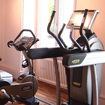Eating and drinking
Elementary A2 level
Description
Materials
Main Aims
-
By the end of the lesson, students will have practised reading for gist and detail in the context of eating and drinking.
Subsidiary Aims
-
By the end of the lesson, students will have developed their fluency in speaking in the context of eating and drinking.Also ss will have reviewed old and practised new vocabs. of food and drinks in the same context.
Procedure (18-30 minutes)
T.exposes ss to a list of food she likes because they are good for health and other one bad for health. T. asks ss to start writing their own list . Then they work in pairs asking and answering following that pattern:What do /don't you like to eat ? -I like to eat ....... .Why ? -Because it's good for my health.
T.projects pics of food and tries to elicits names of food. T. drills . T. starts asking ccqs to introduce these new words.i,e Does it have vitamins? T. refers that carrot contains vitamin A And lemon has vitamin C. What about this ?T. shows pic. of fish. Does it contain protein? . Ss look at pics and make the matches. Peer check. WCFB
From the first question in the lead-in ,t. says that .......is good for your health because it is.....waiting, healthy or natural.but things that are bad for your body are ......t. puts an X in front of healthy to elicit the opposite. T. asks ss to give orally a kind of food or drink that is natural .T. writes ss answers on the board making sure to put fruit juice because they will find it in the text.
Ss 're asked to read quickly ideas in ex. 3 and write agree or not agree. T.demonstrates the first one with the class. Pair check. WCFB.
Ss 're asked to match the headings (ideas) to the text in 2 mins only . T. checks . Ss reread again . T. asks what do you think ? Do you agree with the text. T. demonstrates the first one. Individual work. Pair check. WCFB
T. asks ss to work in groups to tell each others what they like to eat and why. T. encourages ss to use as much learnt language as they can. T. monitors leaving them to produce . t. checks individuals to tell about their partners.

